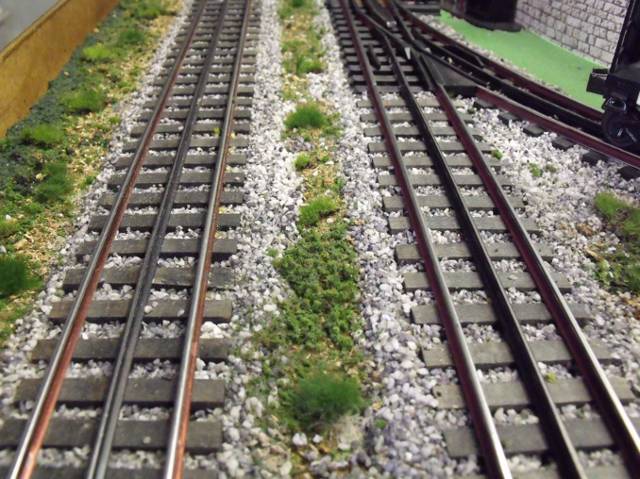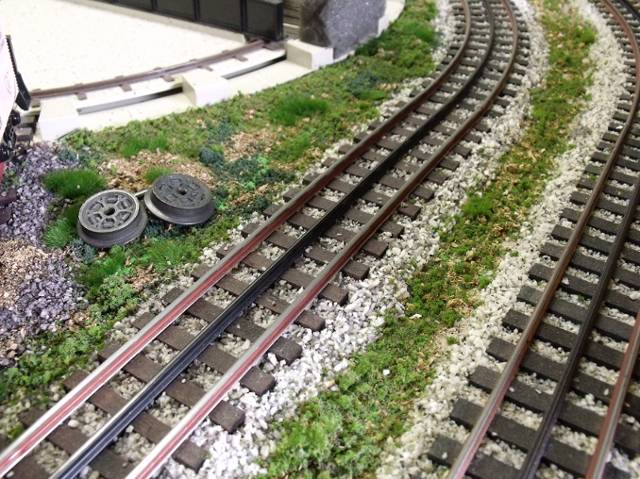Replies sorted oldest to newest
I have just starting to do ballast work on my layout and remembering a discussion on the forum some time back I decided to try the chicken grit. So far it has worked great and I like the mixture of different shades of stone in it. It leaves a little dust on the crossties but I'm figuring it will go away when I seal it.
Steve A.
I have used Starter Chicken Grit for years. Prewash, let dry, spread, glue. And YES it can be dyed for darker color in yard areas.

Darker (dyed) on left

Dennis
What did you use to seal your chicken grit ballast; diluted white glue?
Steve
OK, so where does a city boy get chicken grit?
I remember past dicussions where kitty litter and possibly grit were warned against due to getting into gears etc? Does the sealing protect from that?
Dewey,
Thanks for the application tips.
I was wondering if anyone used that $100 ballasting tool. Is it worth it? What do you use?
A paper cup works just fine. Many seem to think ballasting track is a difficult process. Nothing could be further from the truth. Simply distribute the ballast between the rails and then spread it out with a 3/4" wide brush or your 2 fingers. Tap the top of the rails with a block of wood--the vibration gets any stray pieces of ballast off the rails and settles the ballast between the ties. Then spread outside the rails and do as above. Work on about 3 to 6 feet at a time.This doesn't take that much time
You'll spend far more time gluing.
Bob
I use my 0-5-0 $5 Ballasting machine as pictured below. I work about 30" at a time, applying and brushing out the ballast, then liberally applying "wet water" with the mustard squeeze bottle, then the 50/50 "wet water "and white glue mix applied with the ketchup bottle. i mix a gallon at a time. For me, "wet water" is tap water with 4-5 drops of liquid Palmolive DW soap per gallon of water. The "wet water" enhances penetration of the glue mix.
Use a drop cloth or such underneath to catch any liquid coming through wire holes,etc. to protect floor covering[or all that mess under your layout![]() ].
].
Attachments
In the Yard I don't use cork underneath the track and "submerge" my track down into the ground using 3/16" foamcore board on top of the surface and I then use Brennan's dirty,greasy,sooty ballast as opposed to the gray granite on the mainlines. Be very careful around turnouts and avoid glue mix on ties along the points and moving rail. Just use a thin application of dry ballast down between the ties in that area.
Attachments
Dennis
What did you use to seal your chicken grit ballast; diluted white glue?
Steve
Dewey has the answer... White glue & water 50/50 mix.
Thanks guys, I'm to the point on some of my ballasting that I need to seal or is it secure it to the layout.
Steve A.
Yeah, I have been using 50/50 for my ballast and it works great!
I, too, have used roofing gravel for many years. I buy it in five gallon buckets - which goes a really long way. An advantage is this material is that you can choose from many colors which are often mixed so you don't have the uniform, single color look. I use two colors on my layout, one for the main line and another for the yards, sidings, etc.
Around here, it costs about $30 for the bucket although you can sometimes get buckets of leftover material for a lot less, although not with the full color choices.




